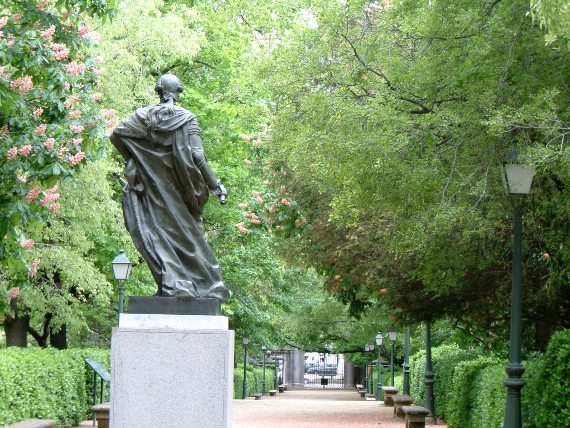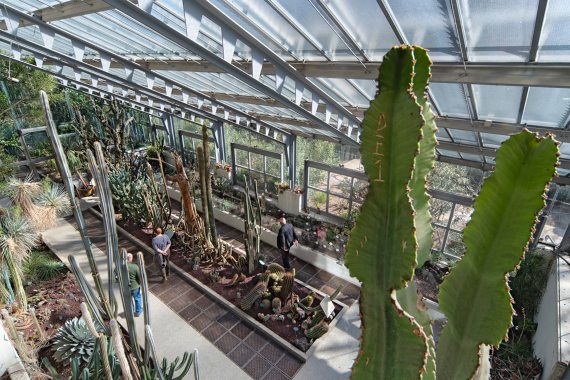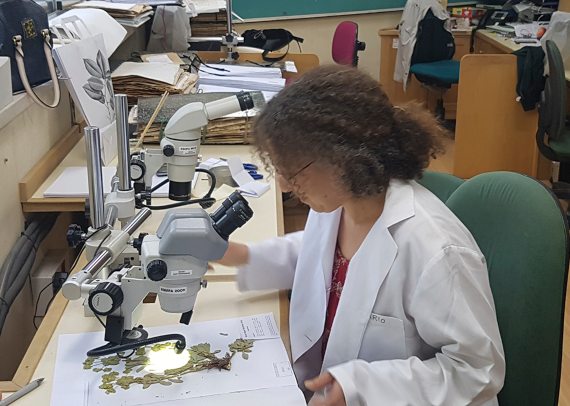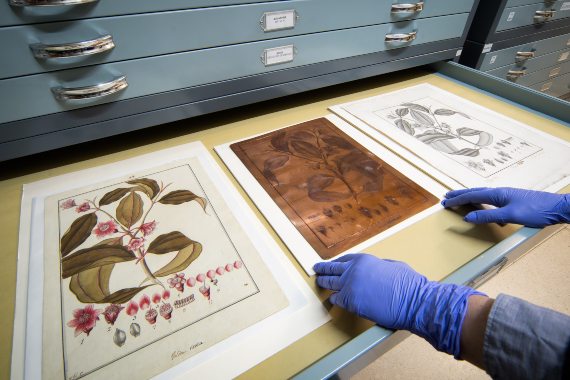Created to conserve and exhibit the exotic species coming from the ‘new’ continents, botanical centres are reinventing themselves to catalogue and save the plant wealth of the planet.
In her 2016 book “Lab Girl”, Hope Jahren, professor of geobiology at the University of Oslo, says that she chose not to study the sea because “it is a lonely and empty place”. According to her data, there is six hundred times more life on the land than in the sea, the cause of which is mainly due to the age-old and silent work of plants. She cites, for example, the case of the protected forests in the western United States, her country of origin, where 80 billion trees grow; that is, for every American there are more than 200 trees. Jahren also makes a request: open the window and look out; do you see any plants?

While a negative response is unlikely, it is possible that if the window looks out over a contemporary cityscape, the view could be somewhat monotonous: slender banana plants in the streets, red-flowered geraniums in spring… The number of species in our cities pales in comparison to the overwhelming and diverse wonders of plant life that survive on the planet despite the strong pressure they have been under for too many decades. Science, however, has devised a way of compensating for this, shall we say, urban plant uniformity, by creating true paradises in the midst of stone and asphalt: botanical gardens. Living museums.
The first botanical garden to be created with an early vocation for research, that is, with the idea of doing something that would lead to new knowledge beyond the simple cultivation of plants, which is obviously very old, or creating a place of leisure, was the botanical garden of the University of Pisa in 1544, at the height of the Renaissance. Many followed, most of them in Italy like those in Padua or Florence, and from there they spread to the rest of Europe. The initial objective was the cultivation of medicinal and food plants and the exotic species that explorers began to bring back with them from their overseas voyages, and to investigate their properties.
The evolution of a garden
Since then, one of the most significant features of these gardens is the evolution that botanical science has undergone over the last 150 years. While the science was initially limited to an anatomical description of the plant, classifying it according to the standards developed by Charles Linnaeus in the 18th century, identifying it and, as far as possible, assigning it certain characteristics, today’s botanists ask themselves not only if a species is new or not, but also what relationship it has with others, how it has arrived at a certain place and how it has evolved. “This is what is called evolutionary research, which helps us to understand how life appeared and how it has become diversified, how more and more differences have appeared between living beings, always in order to adapt better to the environments in which they are found,” explains Esteban Manrique Reol, director of the Royal Botanical Garden (Madrid), which opened in 1781 under the reign of Charles III of Spain and currently operates as a research centre of the Spanish National Research Council.

The laboratories in botanical gardens have gone from being well equipped with magnifying glasses and microscopes to nowadays even having PCR machines (so sadly current these days) to amplify genes and make comparisons, as well as electron microscopes and similar instruments of the so-called molecular method, which allow botanists to see details that until now have been hidden from the human eye.
Current research also requires a lot of going out into the field: “Many plants are threatened because the environment is so constraining on their way of life that they lose their ability to reproduce, to produce seed or at least viable seed. Given that the evolutionary process is very slow, if we are suffering from very rapid environmental changes, such as climate change or pollution… there are many species that are disappearing before they can adapt to these new changes,” explains Manrique.
Saving threatened plants and digitizing their vast collections
Thus, today’s botanists seek out these plants at risk to find those that are most viable, and establish methods to reproduce them in situ in the gardens themselves. From there, the aim is to find seeds and create new fertile plants in the so-called germplasm bank so that, if necessary, they can be returned to their original populations where they are disappearing.

Botanical gardens have a collection of living plants, but also herbaria: collections of plants or parts of plants —dead, dried and identified— that can often be many hundreds of years old. For their conservation —the problem is that insects or fungi eat them— the methods of conservators have evolved from the application of insecticides to the current technique of freezing; all the plants that enter or are exchanged between herbariums spend at least one or two weeks at –20°C before being incorporated into the collection.
Finally, like so many institutions, gardens are rushing to digitise their collections and archives so that researchers from all over the world can consult them. To date, the Royal Botanical Garden (Madrid) has digitised some 800,000 herbarium specimens from its total of about 1,300,000. Meanwhile, all the marvels of the 18th century botanical plate archive, drawn by the great botanical explorers such as José Celestino Mutis, a pioneer of this discipline in Spain and Latin America, are already on display in the digital world for anyone who needs more than the view from their window.

Comments on this publication